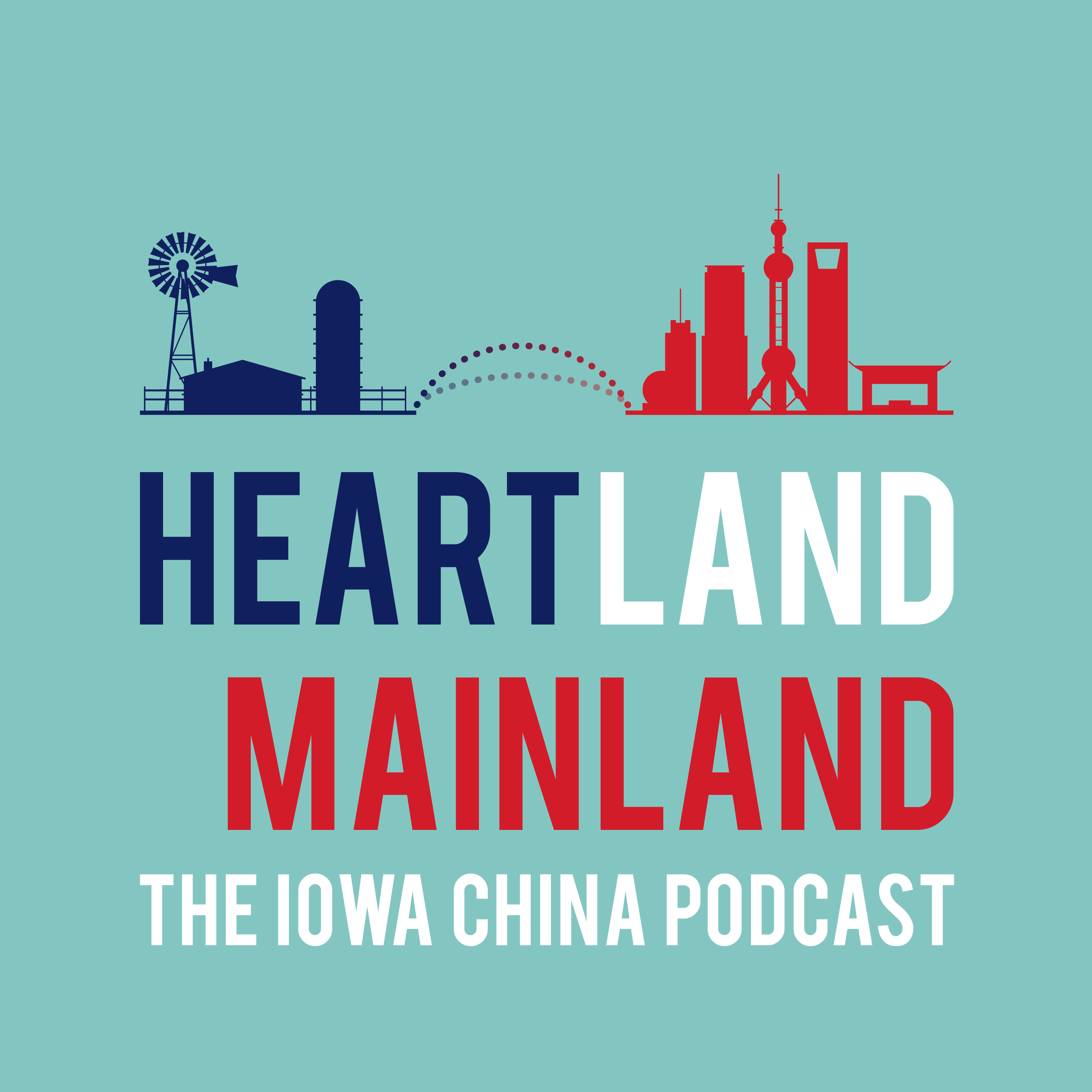About MacroPolo
This is why MacroPolo believes in:
China’s hukou system (legally-binding household registration) is a highly divisive policy. Implemented in 1958, the policy has aimed to tie Chinese citizens to specific locations, thus controlling their movement around the country. Since reforms began in 1978, the hukou system has been closely associated with Beijing’s desire to ensure political stability by controlling the size and character of the urban population.
In practice, the hukou system today divides Chinese citizens into socioeconomic classes—urban vs. rural and migrant vs. legal residents—that exacerbate inequality. At the same time, policymakers are divided over how to address the obvious and unsustainable problem of tying people to unproductive jobs in low-opportunity locales. Current hukou policies aim to keep people away from the largest and most vibrant cities, which preclude the formation of a natural labor market. Such a policy can stymie China’s economic dynamism and stall future growth.
This institutionalized form of division has created a very large cohort of second-class citizens—some 285 million, or roughly 20% of China’s total population. But the hukou system’s most enduring and pernicious effect has not been restricting the movement of people per se. Rather, it has prevented migrants from settling and putting down roots in the cities to which they have moved. The system does this primarily by conferring privileges on urban citizens in the form of social welfare benefits, education, and professional opportunities, while withholding them from migrants. In fact, the barrier to becoming an urban citizen can be so steep that migrants either voluntarily return to their hometowns or are sometimes deported.
Reforming this system makes economic sense, not least because China’s own leaders continue to push urbanization as a driver of future growth—yesterday’s migrants will become tomorrow’s urban consumers and taxpayers. But these reforms are also a political minefield because urban elites are, by and large, wary that fully liberalizing the policy would come at their expense. Enfranchising such a large cohort of migrants would necessarily entail a redistribution of social welfare and education benefits and lead to fierce competition over already scarce resources in urban China. In other words, it would immediately devalue current urban hukou holders’ status. That is why hukou reform has sputtered: the economic logic is generally sound but political interests are arrayed against meaningful change.
But what was once a tool for the state to maintain social stability may yet prove destabilizing as a younger generation of migrants becomes increasingly aware of the discriminatory nature of the system. Many of these “millennial migrants” were raised in cities and have adopted the aspirations and expectations of their urban peers. They are also, on the whole, better educated and higher skilled than the older generation that brought them to the cities in the first place. They represent a talent pool that can feed China’s next stage of growth. And whatever the government may want, most of these millennial migrants intend to stay where they are.
Why On the Road?
There has been much academic research on the political, economic, and social dimensions of the hukou system and how it affects the migrant population and inequality. Policymakers in Beijing, too, understand that their hukou policy has mostly outlived its utility. Yet hukou remains largely an abstraction to most outside observers, particularly those who are not affected by the policy or barely know what it is. Indeed, even among those specialists who focus on China, many have never seen what an actual hukou booklet looks like.
On the Road aims to change that. This product uniquely combines quantitative and qualitative tools to make the hukou issue more real and accessible—and even, we hope, to humanize it. This is, in fact, a policy issue that will resonate with global (especially American) and Chinese audiences alike. Chinese migrants’ experiences parallel, in many respects, those of foreign immigrants to the United States or Europe. Fundamentally, the migrant issue in China, like the present-day immigration debate in America, is about enfranchising a marginalized “out group” into becoming full-fledged and equal citizens.
On the Road offers both a quantitative assessment of hukou reform progress across 40 Chinese cities and qualitative accounts of migrant lives based on a comprehensive Chinese government survey, including interviews with real-life migrants across three cohorts we have labeled “blue collar,” “white collar,” and “the Dreamer.” In addition, users can directly engage with On the Road by determining which city “they” belong in based on a predetermined set of criteria (below see details and explanation of our methodology).
The Chinese government unveiled hukou reforms several years ago, but these reforms are widely understood to have had mixed results at best. On the Road is the first to offer a comprehensive city-level assessment of progress, which will be critical to understanding the current state of these reforms. At the same time, although the diversity among migrants is being recognized, their attendant experiences—that is, how they live, work, and play—have been under-explored and deserve more attention.
Key Features
(I’m)migrant
This feature allows users to take on the identity of fictionalized Chinese migrants by selecting between three distinctive characters: the blue-collar chef, the white-collar young tech entrepreneur, and the teenage Dreamer who doesn’t want to leave Beijing. At the bottom of each character’s narrative, you can listen to real-life Chinese migrants who provide additional color on their lives “In Their Own Words.” The audio portion of this feature is not meant to directly connect to or perfectly represent each of the characters; we aim simply to offer the voices of real migrants whom we interviewed to complement our fictionalized narratives.
Although the three archetype characters are fictional, they have been created based on a composite of 2014 survey data from the Chinese government, as well as various academic research on migrants’ consumption patterns, self identification, and even happiness. The national survey, “Survey of Migrants’ Behaviors Regarding Health, Social Integration, and Mental Health” [2014年全国流动人口卫生计生动态监测调查社会融合与心理健康个人问], was conducted by what is now the renamed National Health Commission of China and is one of the most comprehensive and granular survey data sets we have seen on Chinese migrant behavior, living conditions, integration into urban communities, and perceptions of social belonging.
Because the data is from a national survey, we only focused on data for three cities: Chengdu, Shenzhen, and Beijing (specifically Chaoyang District), while controlling for age to fit our fictionalized characters. Nearly all figures integrated into the three narratives reflect survey data from each of the cities noted above.
We took this approach because we wanted to present a realistic portrayal of each migrant character based on the general characteristics of their respective cohorts. At the same time, we took creative licenses to personalize these characters’ lives in narrative form—with the aim of humanizing disparate migrant experiences and highlighting the diversity among them.
Hukou Difficulty Index
In what Chinese cities is it the most difficult to acquire a hukou? And how has hukou reform progressed at the local level? This feature answers both questions. For the first time to our knowledge, we have quantitatively assessed the difficulty of obtaining a hukou across 40 Chinese cities (see more details under Methodology). The index and the resulting ranking are based on two types of information: hukou policy at the city level and migrant data from that city. The index design is informed by three guiding principles:
- Cities with more liberal hukou policies receive higher scores. We believe that the goal of China’s current reform is to make it easier for migrants to receive a hukou—that is, a higher proportion of migrants in a given city should be granted hukou, which should be reflected in the policies and migrant population data across the 40 cities.
- Government policy may differ from reality, therefore examining policies alone is not sufficient. City-level policies need to be weighed against empirical assessments of whether more hukou have in fact been granted to migrants.
- Hukou policy at the local level is rapidly evolving, with some cities seemingly liberalizing their policies overnight. As such, we acknowledge the fact that there might be meaningful differences between how restrictive a given city’s hukou policy was in the past and how liberal it is today. Therefore, actual performance and current policy receive equal weight in the computation of the final score.
The interactive map contains our sample of 40 Chinese cities, which are categorized into “hard,” “medium,” and “easy.”Clicking on each colored dot will lead users to the results for each city, including a ranking of all 40 cities and key factors that we used to determine city-specific results. Users will also see a headline score to denote the difficulty of obtaining a hukou in that city.
Find Your City
If you were a Chinese migrant, which city should you move to? Users can determine this on your own by using this feature. Quickly select the answers from each drop down menu, including age, education, income level, housing, and volunteer experience, then click submit to be taken to the city that fits you, based on our algorithm and best estimates.
The criteria used were selected from among those in the city-level grading system used to form our hukou difficulty index. We also exercised some discretion in assigning the city that fits each user.
Each city is accompanied by a brief description of what it’s like to live there, key industries, quality of life issues, leisure activities, and other relevant factors. We also included four main facts for each city: urban population, proportion of migrants, average annual wage, and air quality. Never heard of Nanning or Guiyang? We have you covered.
Methodology for Hukou Difficulty Index
How We Selected the Cities
We selected 40 Chinese cities based on three criteria: administrative hierarchy, general attractiveness, and population size. First, in terms of administrative hierarchy, all four provincial-level municipalities are included (Beijing, Shanghai, Tianjin, and Chongqing). Not only are these the most important cities politically, but they are also the largest in terms of economic output. All four are among the largest cities in the world based on population.
Second, we included 26 provincial capitals—although Lhasa in Tibet is an exception because there is not much migration to that city (this category includes Nanjing, Jinan, Shijiazhuang, Guiyang, Zhengzhou, Fuzhou, Harbin, Changchun, Hohhot, Urumqi, Taiyuan, Lanzhou, Nanning, Yinchuan, Xining, Haikou, Kunming, Shenyang, Wuhan, Nanchang, Xi’an, Hefei, Changsha, Chengdu, Guangzhou, and Hangzhou).
These cities are typically the most populous and economically dynamic within their provinces, which means they tend to have the highest quality of public services relative to other provincial cities. In other words, these are usually the most attractive cities in each province for migrants. Notably, even though inland provincial capitals are less developed than the average major coastal city, these capitals nonetheless tend to be the first choice for rural migrants who want to settle in an urban area within their province. These inland capitals will likely see more local migrant inflows because these provinces have larger rural populations than coastal provinces.
Third, beyond the above 30 cities, we selected an additional ten based on the population of their urban core areas (Wuxi, Suzhou, Qingdao, Xiamen, Dalian, Dongguan, Shenzhen, Foshan, Ningbo, and Wenzhou). Measuring urban population in China has become increasingly challenging, as cities in recent years have continued to expand and swallow up smaller cities and towns. Many cities now claim they have a population of 5 million or even 10 million, larger than some US states. Yet across many of these cities, less than 20% of the total population reside in the urban core but are instead dispersed among peripheral towns that have been recently absorbed. Therefore, for these ten cities, we used the population of the urban core (市辖区 or 城区) to determine their size.
Composing the Index
The quantitative assessment of city-level hukou reform is comprised of two parts: (1) the proportion of migrants in a given city that is qualified to receive a hukou and (2) the percentage of long-term migrants in the total population.
In the first part, we evaluated each of the 40 cities’ hukou application policies. Basically, at the instruction of the central government, all large cities have created their own hukou applications, which are centered on a detailed quantitative grading system that weighs various criteria of a migrant applicant. In fact, this is not so dissimilar from the immigration points system in Australia or Canada. Migrant applicants for hukou will be graded according to these city-specific criteria, and those with a passing grade will be granted a local hukou.
Common criteria used across cities include age, education, property ownership, and length of social security contribution locally (each city runs its own social security system, which is not portable across regions). For example, having a college degree may give an applicant 40 points, while a high school diploma gives just 20. Each individual score is then summed up to give the applicant his or her final grade.
After reviewing the actual hukou application policies of all 40 cities, we determined ten factors that are the most common and carry the highest weights: age, education, length of local residence, length of enrollment in local social security, annual tax payment, property ownership, professional certificate/credential, volunteer experience, blood donations, and whether residence is in a new urban district (these districts usually have insufficient housing demand, so city governments deliberately encourage migrants to settle down there). We omitted factors that are irrelevant for the majority of the migrant population, such as “national honor.”
We coded each city’s grading system and used an algorithm to calculate the score of any potential applicant. Using these scores to compare with the minimum grade for receiving local hukou, we can determine whether an applicant with that score will be able to receive a hukou in any of the 40 cities. To assess the difficulty of receiving a hukou in each city, we calculated what portion of the total applicant pool (there are millions) is qualified for local hukou (the application pool is the same for all 40 cities). The final result is a number between 0 and 1, with a higher reading denoting that a greater percentage of the applicant pool is qualified for local hukou—that is, that particular city has a relatively more liberal hukou policy.
The second part of our assessment is based on actual hukou progress, since acquiring a hukou in this or that city may actually be more difficult in reality than on paper. We determined the proportion of migrants that have settled in a particular city for more than one year. This is used as a measure for the difficulty of acquiring a hukou in reality, since the assumption is that all migrants that have settled for a longer duration desire a local hukou if they can get one easily. This implies that migrants who do not yet have hukou have failed to do so not because they do not want one but rather because it is difficult to obtain one.
On this basis, it is reasonable to assume that cities with a higher percentage of migrants without hukou after more than one year can be said to be the more difficult places to obtain one. As such, each city’s score is calculated as 1 minus the percentage of long-term migrants (>1 year). This adjustment is made so that a higher score means a more liberal hukou policy.
Last, the scores that form our index are determined by the weighted sum of the scores from the two parts above, as well as a final adjustment that we made based on a city’s general attractiveness to migrants. Specifically, we adjusted the raw index score by accounting for average wage levels in each city. It is obvious that migrants are more likely to move to cities with better economic opportunities. Although the 40 cities in our sample are already considered the most attractive among China’s 600-plus cities, there is still considerable variance within this group in terms of attractiveness. For instance, Beijing may have the strictest hukou policy but is also among the most attractive cities for migrants.
Acknowledgment
We would like to thank Paulson Institute student fellows Yanhan Fang, Lizhong Liu, Sinong Duan, and Shusheng Zhong, all students at the University of Chicago, for their excellent research support in creating the difficulty index.
For all index related questions, please contact Houze Song at hsong@paulsoninstitute.org.



